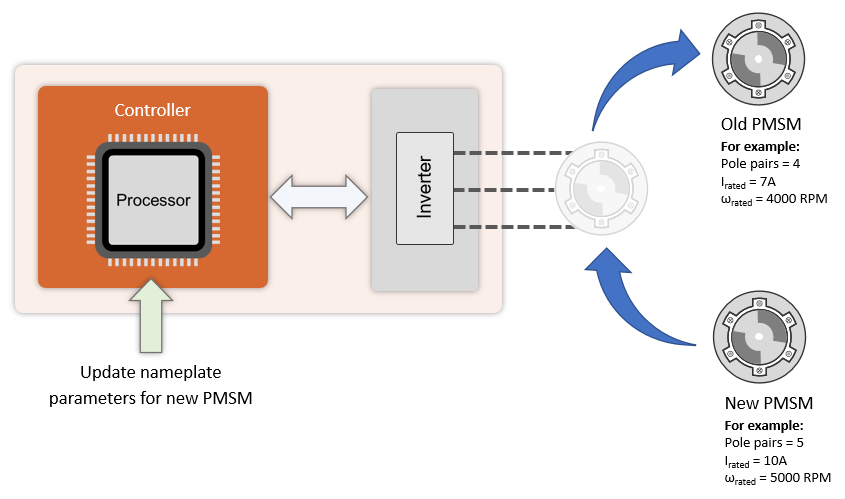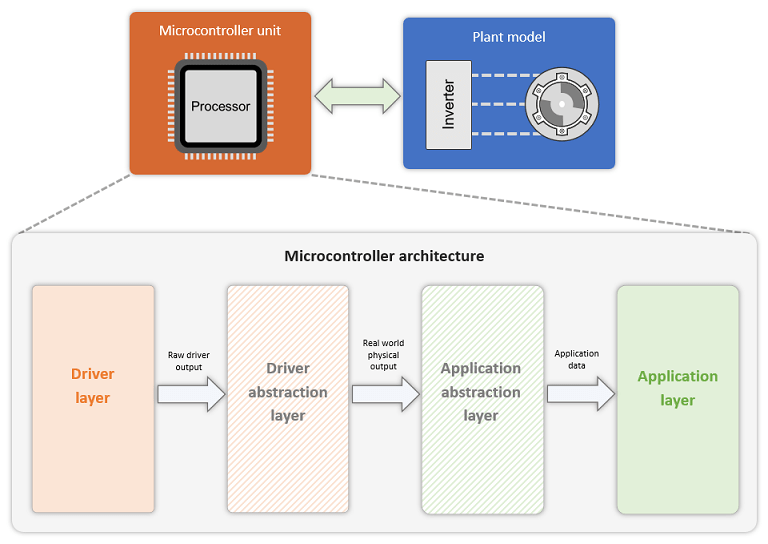Field-Oriented Current Controller
Implement current control for three-phase motors using field-oriented control (FOC) technique
Since R2023b
Libraries:
Motor Control Blockset /
Controls /
Controllers
Description
The Field-Oriented Current Controller block implements current control for a three-phase permanent magnet synchronous motor (PMSM) or an AC induction motor (ACIM) using the FOC algorithm. You can input the reference d- and q-axis currents, measured stator phase a and b currents, motor electrical position, as well as PI controller parameters to compute three phase voltages that drive the motor.
The block uses Clarke and Park transformations to compute actual d- and q-axis currents from the measured phase currents and motor electrical position. It uses the PI Controller blocks to implement d- and q-axis current controllers. The current controller loop uses the reference and actual d- and q- axis currents to generate reference voltages that drive the motor. For more information about the FOC algorithm implemented by the block, see Field-Oriented Control (FOC).
The block supports SI and per-unit inputs, however, units of all block inputs should be identical.
Examples
Ports
Input
Output
Parameters
Extended Capabilities
Version History
Introduced in R2023b

